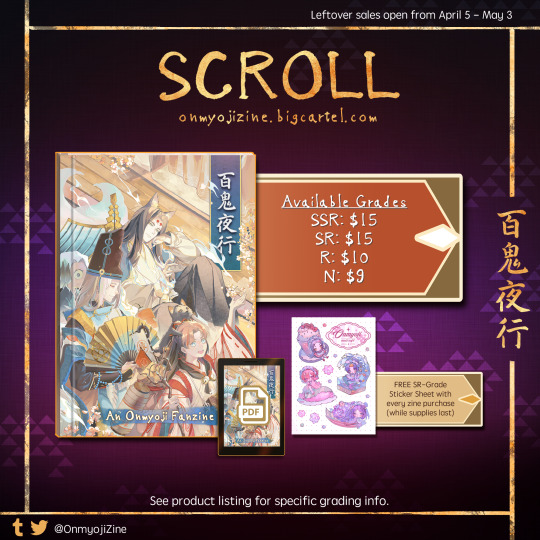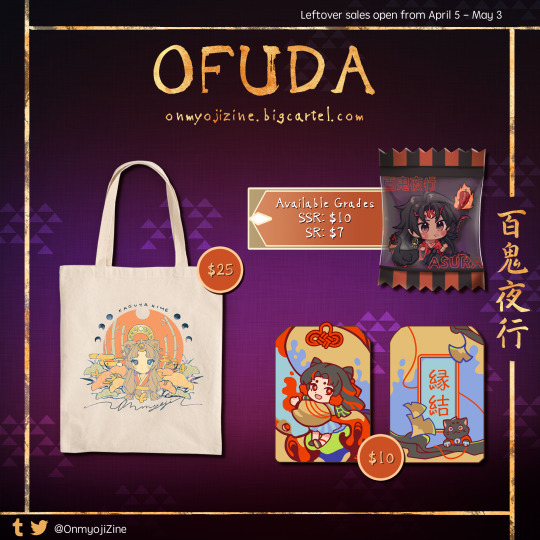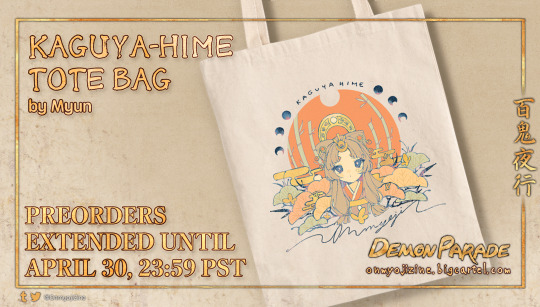#kaguyahime
Explore tagged Tumblr posts
Text
Análise completa do Livro japonês O Cortador de Bambu.
Não foi possível a continuação do conto pois seriam vários dias necessários para concluir, então preferi criar esse resumo detalhado e abrangendo diversos temas. Espero que gostem!
Título Original: 竹取物語 (Taketori Monogatari)
Autor: Anônimo
Período: Heian (794-1185)
Resumo:
"O Conto do Cortador de Bambu" é uma antiga obra da literatura japonesa, muitas vezes considerada o primeiro romance japonês. A história começa com um velho cortador de bambus chamado Taketori no Okina, que encontra um minúsculo bebê brilhante dentro de um tronco de bambu. Ele e sua esposa, que não têm filhos, decidem criá-la e dão-lhe o nome de Kaguya-hime (Princesa Kaguya).
À medida que Kaguya-hime cresce, sua beleza se torna incomparável, atraindo a atenção de muitos nobres e até do imperador. Cinco nobres de alta estirpe se aproximam de Kaguya-hime, pedindo sua mão em casamento. Para afastá-los, ela lhes impõe tarefas impossíveis, como recuperar relíquias míticas e objetos lendários. Cada nobre falha em sua missão, revelando sua natureza gananciosa e desonesta.
O próprio imperador, Mikado, tamb��m se apaixona por Kaguya-hime e tenta conquistá-la, mas ela gentilmente o recusa, explicando que não pertence a este mundo. Com o tempo, Kaguya-hime revela a seus pais adotivos que ela é, na verdade, uma princesa da lua, enviada à Terra como punição. Apesar de suas súplicas para ficar com eles, sua permanência na Terra está chegando ao fim.
No final da história, emissários celestiais vêm buscar Kaguya-hime para levá-la de volta à lua. Apesar da tristeza e do lamento de seus pais adotivos e do imperador, Kaguya-hime aceita seu destino e parte, deixando para trás uma carta de despedida e uma elixir da imortalidade para o imperador. Devastado pela perda, o imperador ordena que o elixir seja queimado no Monte Fuji, simbolizando sua rejeição à imortalidade sem Kaguya-hime.
Temas Principais:
Natureza Efêmera da Vida: A transitoriedade da beleza e da vida humana é um tema central, refletindo a filosofia budista que permeia a obra.
Futilidade das Riquezas e Poder: A narrativa demonstra que riqueza e poder são insuficientes para conquistar o amor verdadeiro ou alcançar a felicidade duradoura.
Misticismo e Sobrenatural: Elementos sobrenaturais, como a origem celestial de Kaguya-hime e as tarefas impossíveis, conferem um caráter mítico à história.
"O Conto do Cortador de Bambu" não é apenas uma peça fundamental da literatura japonesa antiga, mas também uma reflexão profunda sobre a natureza humana, amor, e o destino. Sua ressonância continua a inspirar adaptações e interpretações, solidificando seu lugar como um tesouro literário atemporal.
Os Mistérios de "O Conto do Cortador de Bambu"
1. Autoria Desconhecida: Apesar de sua importância na literatura japonesa, o autor de "O Conto do Cortador de Bambu" permanece anônimo. Especulações sugerem que a obra pode ter sido escrita por um aristocrata da corte ou até mesmo por uma mulher, um conceito revolucionário para a época. A falta de registros históricos concretos apenas adiciona ao enigma.
2. Origens Temporais e Influências: A data exata da composição do conto é incerta. Acredita-se que tenha sido escrito durante o Período Heian (794-1185), mas não há consenso. O conto pode ter sido influenciado por mitos e folclore mais antigos, tanto japoneses quanto estrangeiros, incluindo contos chineses e budistas.
3. Temas Sobrenaturais e Simbolismos: A natureza celestial de Kaguya-hime e suas origens na lua levantam questões sobre o simbolismo e as influências religiosas e filosóficas do conto. A história incorpora elementos do budismo e do xintoísmo, refletindo a visão do mundo e as crenças da época. A presença de tarefas impossíveis, criaturas míticas e objetos lendários sugere um simbolismo profundo, que continua a ser debatido por estudiosos.
4. Motivações de Kaguya-hime: As ações de Kaguya-hime, especialmente sua recusa em casar-se e seu retorno à lua, são enigmáticas. Sua tristeza ao deixar a Terra e seus pais adotivos sugere uma luta interna entre o dever celestial e os laços emocionais humanos. O motivo exato de sua punição e envio à Terra nunca é claramente explicado, deixando espaço para interpretação.
5. Final Ambíguo: O final do conto, onde o imperador queima a carta e o elixir da imortalidade no Monte Fuji, levanta questões sobre a rejeição da imortalidade e a aceitação da mortalidade. Este ato pode ser visto como uma metáfora para a efemeridade da vida humana e a busca por um significado mais profundo além da imortalidade física.
6. Interpretações e Adaptações: Ao longo dos séculos, "O Conto do Cortador de Bambu" tem sido sujeito a inúmeras interpretações e adaptações. Cada adaptação, seja no teatro Noh, na literatura moderna ou no cinema, oferece uma nova perspectiva sobre os mistérios e simbolismos do conto. A versão cinematográfica de 2013 pelo Studio Ghibli, "O Conto da Princesa Kaguya", por exemplo, aprofunda os aspectos emocionais e filosóficos da história, destacando a luta de Kaguya-hime entre o dever celestial e seus desejos humanos.
Conclusão: "O Conto do Cortador de Bambu" é mais do que uma simples história antiga; é um mosaico complexo de mistérios e simbolismos que continua a intrigar e fascinar leitores e estudiosos. Cada camada do conto oferece novas questões e interpretações, garantindo que sua relevância e mistério perdurem por gerações futuras.
Kaguya-hime: Entre a Virtude e a Malícia
9 de julho de 2024
Tóquio, Japão — "O Conto do Cortador de Bambu" continua a ser uma fonte de fascínio e debate, particularmente em relação à personagem central, Kaguya-hime. Alguns leitores a veem como uma figura caprichosa e cruel, enquanto outros a interpretam como uma mulher sábia e prudente. Este dilema é evidenciado pelos desafios que ela impõe aos seus pretendentes, o que levanta questões sobre a verdadeira natureza das suas intenções e a moralidade de seus atos.
Os Desafios Impossíveis
Kaguya-hime estabelece tarefas aparentemente impossíveis para seus cinco pretendentes aristocráticos, que vão desde recuperar relíquias míticas até encontrar objetos lendários:
A tigela de pedra de Buda da Índia.
A árvore de joias do Monte Horai.
A pele de um rato de fogo da China.
O colar de dragão do mar.
A concha de andorinha.
Essas tarefas não são apenas extraordinariamente difíceis; elas também testam a sinceridade e o caráter dos pretendentes. Cada um deles, em vez de se empenhar verdadeiramente na busca, tenta enganar Kaguya-hime com falsificações ou delega a tarefa a outros. Isso revela a superficialidade de suas intenções, já que eles estão mais interessados em sua beleza e no prestígio social do que em seu bem-estar ou felicidade.
Pretendentes e Suas Falhas
Mikado, o Imperador: Embora genuinamente encantado por Kaguya-hime, Mikado também não consegue compreender ou aceitar a verdadeira natureza de seu amor, evidenciado pela sua insistência em tê-la como consorte, ignorando seus próprios desejos e sua conexão celestial.
Os Cinco Pretendentes:
O Príncipe Ishizukuri: Tenta enganar Kaguya-hime com uma tigela de pedra falsa.
O Príncipe Kuramochi: Forja uma falsa árvore de joias.
O Grande Ministro de Direita Abe no Miushi: Apresenta uma pele de rato comum, alegando que é a pele de fogo.
O Grande Conselheiro Otomo no Dainagon: Simplesmente desiste e admite sua incapacidade.
O Conselheiro Iso no Kami no Maro: Mente sobre sua busca pela concha de andorinha.
Através dessas ações, fica claro que nenhum dos pretendentes estava disposto a sacrificar-se ou a demonstrar verdadeira devoção, optando por atalhos e enganos para ganhar a mão de Kaguya-hime.
Kaguya-hime: Sabedoria ou Malícia?
A postura de Kaguya-hime pode ser interpretada de várias maneiras:
Proteção e Autopreservação: Kaguya-hime pode ser vista como alguém que, sabendo de sua origem celestial e do seu destino inevitável, tenta proteger-se de um casamento sem amor e assegurar-se de que os pretendentes não estão interessados apenas em sua beleza ou no prestígio social que ela traria.
Teste de Caráter: Ao impor desafios, Kaguya-hime avalia o caráter dos homens que desejam casar-se com ela. Suas ações desmascaram a superficialidade e a desonestidade dos pretendentes, revelando que não merecem seu amor ou lealdade.
Autonomia e Respeito: Kaguya-hime demonstra uma forma de resistência e autonomia em uma sociedade que geralmente não permitia tal liberdade às mulheres. Seus desafios podem ser vistos como uma forma de exigir respeito e reconhecimento de sua agência.
Conclusão:
O dilema moral em torno de Kaguya-hime, sua suposta malícia ou sabedoria, é central para o fascínio contínuo de "O Conto do Cortador de Bambu". Ao estabelecer desafios impossíveis, Kaguya-hime não apenas protege sua própria integridade e felicidade, mas também expõe a hipocrisia e a superficialidade de seus pretendentes. Seu comportamento pode ser interpretado como uma busca pela verdade e autenticidade em um mundo onde aparências e status frequentemente ofuscam os valores genuínos.
Em última análise, Kaguya-hime não é uma vilã caprichosa, mas uma figura complexa que desafia normas sociais e busca preservar sua própria dignidade em meio às expectativas de uma sociedade patriarcal. Sua história continua a ressoar, oferecendo uma rica tapeçaria de temas para reflexão e debate.

4 notes
·
View notes
Text
“Khi còn trẻ tôi chẳng sợ gì cả
Chỉ sợ sự dịu dàng của em”
— Sông Kanda, Kaguyahime, 1973

17 notes
·
View notes
Text








👹DEMON PARADE LEFTOVER SALES👹
Leftover sales for Demon Parade: An Onmyoji Zine are now open!
Leftovers will run from April 5, 12:00 PST to May 3, 23:59PST.
Check us out here at https://onmyojizine.bigcartel.com/
#onmyoji#onmyoji zine#zine leftovers#abe no seimei#enmusubi#tamamo no mae onmyoji#kidomaru#takiyashahime#zashiki warashi#kohaku#onikiri#orochi onmyoji#ibaraki doji onmyoji#sp ibaraki doji#bakekujira#kaguyahime#asura onmyoji#yato no kami#vampira#tsukuyomi#oitsuki#momiji
8 notes
·
View notes
Text
youtube
“Jantama Pong☆' Sequel 'Jantama Kan!!” The Announced for April 2024
Video game developer Yostar Co., LTD. unveiled the teaser trailer for the Jantama Pong (Mahjong Soul Pon) anime on its official website. Starting in April 2024, Jantama Kan!! (Mahjong Soul Kan!!), a net anime will be available for viewing on the official franchise YouTube account.
#jantama kan!!#mahjong soul kan!!#ichihime#wanjirou#miki nikaidou#ein#osamu saitou#kana fujita#kaguyahime#fukuhime#hibiki himekawa#curvy#reina nanami#a-37#yuzu#yui yagi#anime#anime adaptation#anime news#Youtube
2 notes
·
View notes
Text

Kaguyahime (1993-2005) -- Reiko Shimizu
1 note
·
View note
Text
カグヤヒメ

かぐや姫は、日本の昔話「竹取物語」に登場する架空の姫です。竹取物語は、10世紀頃に成立したとされる日本最古の物語文学の一つで、かぐや姫の美しさと不思議な物語が語られています。
物語によると、かぐや姫は、竹取の翁(おきな)が光り輝く竹の中から見つけた小さな女の子でした。翁は、かぐや姫を育てるうちに、その美しさと優しさに魅了されました。かぐや姫は、月からの使者であると言われ、不思議な力を持っていました。
かぐや姫は、地上で様々な経験をし、多くの求婚者から求愛されますが、最終的には月からの使者に連れられて月に帰っていきました。竹取物語は、かぐや姫の美しさと悲しい運命を描いた物語として、日本だけでなく世界中で愛されている物語です。
手抜きイラスト集
0 notes
Text
Lady Wizards Games in Japanese Mythology and Folklore


Here are two games by Lady Wizard that I play centered around Japanese Mythology and Folklore. They are casual games, but I enjoy the stories. They are available to download in the App Store.
#Princess Kaguya#Kaguyahime#Princess Kaguya’s Quest#Amaterasu#Amaterasu: The Best Goddess in Japan#Lady Wizard
1 note
·
View note
Text

2021 The Lover of Princess Kaguya and 2022 Musical Festival -Chronicle- released!
It has been a very long time coming and we absolutely appreciate everyone's patience! Our fan subs of 2022 Musical Festival -Chronicle- and 2021 The Lover of Princes Kaguya are here!!
Get your downloads HERE and HERE!
Thank you for all of your support these past 11 years! 🙇♀️
#sailor moon#sera myu#seramyu#kaguyahime no koibito#the lover of princess kaguya#musical festival chronicle#nelke myu#bandai myu
117 notes
·
View notes
Text
Complete analysis of the Japanese book The Bamboo Cutter.
It was not possible to continue the story as it would take several days to complete, so I preferred to create this detailed summary covering several themes. Hope you like it!
Original Title: 竹取物語 (Taketori Monogatari)
Author: Anonymous
Period: Heian (794-1185)
Summary:
"The Tale of the Bamboo Cutter" is an ancient work of Japanese literature, often considered the first Japanese novel. The story begins with an old bamboo cutter named Taketori no Okina, who finds a tiny glowing baby inside a bamboo trunk. He and his wife, who have no children, decide to raise her and name her Kaguya-hime (Princess Kaguya).
As Kaguya-hime grows, her beauty becomes incomparable, attracting the attention of many nobles and even the emperor. Five high-ranking nobles approach Kaguya-hime, asking for her hand in marriage. To keep them away, she sets them impossible tasks, such as recovering mythical relics and legendary objects. Each noble fails in their mission, revealing their greedy and dishonest nature.
The emperor himself, Mikado, also falls in love with Kaguya-hime and tries to win her over, but she gently turns him down, explaining that she does not belong in this world. Over time, Kaguya-hime reveals to her adoptive parents that she is, in fact, a moon princess, sent to Earth as punishment. Despite her pleas to stay with them, her stay on Earth is coming to an end.
At the end of the story, celestial emissaries come to collect Kaguya-hime to take her back to the moon. Despite the sadness and lamentation of her adoptive parents and the emperor, Kaguya-hime accepts her fate and departs, leaving behind a farewell letter and an elixir of immortality for the emperor. Devastated by the loss, the emperor orders the elixir to be burned on Mount Fuji, symbolizing his rejection of immortality without Kaguya-hime.
Main Themes:
Ephemeral Nature of Life: The transience of beauty and human life is a central theme, reflecting the Buddhist philosophy that permeates the work. Futility of Riches and Power: The narrative demonstrates that wealth and power are insufficient to win true love or achieve lasting happiness. Mysticism and Supernatural: Supernatural elements, such as Kaguya-hime's celestial origin and impossible tasks, give the story a mythical character. "The Tale of the Bamboo Cutter" is not only a fundamental piece of ancient Japanese literature, but also a profound reflection on human nature, love, and destiny. Its resonance continues to inspire adaptations and interpretations, solidifying its place as a timeless literary treasure.
The Mysteries of "The Tale of the Bamboo Cutter"
Unknown Authorship: Despite its importance in Japanese literature, the author of "The Tale of the Bamboo Cutter" remains anonymous. Speculation suggests that the work may have been written by a court aristocrat or even a woman, a revolutionary concept for the time. The lack of concrete historical records only adds to the enigma.
Temporal Origins and Influences: The exact date of the tale's composition is uncertain. It is believed to have been written during the Heian Period (794-1185), but there is no consensus. The tale may have been influenced by older myths and folklore, both Japanese and foreign, including Chinese and Buddhist tales.
Supernatural Themes and Symbolism: Kaguya-hime's celestial nature and her origins on the moon raise questions about the symbolism and religious and philosophical influences of the tale. The story incorporates elements of Buddhism and Shintoism, reflecting the worldview and beliefs of the time. The presence of impossible tasks, mythical creatures, and legendary objects suggests deep symbolism, which continues to be debated by scholars.
Kaguya-hime's motivations: Kaguya-hime's actions, especially her refusal to marry and her return to the moon, are enigmatic. His sadness at leaving Earth and his adoptive parents suggests an internal struggle between heavenly duty and human emotional bonds. The exact reason for his punishment and sending to Earth is never clearly explained, leaving room for interpretation.
Ambiguous Ending: The ending of the tale, where the emperor burns the letter and the elixir of immortality on Mount Fuji, raises questions about the rejection of immortality and the acceptance of mortality. This act can be seen as a metaphor for the ephemerality of human life and the search for deeper meaning beyond physical immortality.
Interpretations and Adaptations: Over the centuries, "The Tale of the Bamboo Cutter" has been subject to countless interpretations and adaptations. Each adaptation, whether in Noh theater, modern literature, or film, offers a new perspective on the tale's mysteries and symbolism.
The 2013 film version by Studio Ghibli, "The Tale of Princess Kaguya", for example, delves into the emotional aspects and philosophical aspects of the story, highlighting Kaguya-hime's struggle between heavenly duty and her human desires.
Conclusion: "The Tale of the Bamboo Cutter" is more than just an ancient story; it is a complex mosaic of mysteries and symbolism that continues to intrigue and fascinate readers and scholars. Each layer of the tale offers new questions and interpretations, ensuring that its relevance and mystery endure for generations to come.
Kaguya-hime: Between Virtue and Malice
July 9, 2024
Tokyo, Japan — "The Tale of the Bamboo Cutter" continues to be a source of fascination and debate, particularly regarding the central character, Kaguya-hime. Some readers see her as a capricious and cruel figure, while others interpret her as a wise and prudent woman. This dilemma is highlighted by the challenges she poses to her suitors, which raises questions about the true nature of her intentions and the morality of her actions.
The Impossible Challenges
Kaguya-hime sets seemingly impossible tasks for her five aristocratic suitors, ranging from retrieving mythical relics to finding legendary objects:
Buddha's stone bowl from India. The jewel tree of Mount Horai. The skin of a fire rat from China. The sea dragon necklace. The swallow shell. These tasks are not only extraordinarily difficult; they also test the sincerity and character of the suitors. Each of them, instead of truly committing themselves to the search, tries to deceive Kaguya-hime with forgeries or delegates the task to others. This reveals the superficiality of her intentions, as they are more interested in her beauty and social prestige than in her well-being or happiness.
Suitors and Their Failures
Mikado, the Emperor: Although genuinely enchanted by Kaguya-hime, Mikado also fails to understand or accept the true nature of her love, evidenced by his insistence on having her as his consort, ignoring his own desires and their celestial connection. The Five Suitors: Prince Ishizukuri: Tries to trick Kaguya-hime with a fake stone bowl. Prince Kuramochi: Forges a fake jewel tree. Right-wing Grand Minister Abe no Miushi: Presents a common rat skin, claiming it to be the skin of fire. The Great Advisor Otomo no Dainagon: Simply gives up and admits his inability. Advisor Iso no Kami no Maro: Lies about his search for the swallow shell. Through these actions, it becomes clear that none of the suitors were willing to sacrifice themselves or demonstrate true devotion, opting for shortcuts and deceptions to win Kaguya-hime's hand.
Kaguya-hime: Wisdom or Malice?
Kaguya-hime's stance can be interpreted in several ways:
Protection and Self-Preservation: Kaguya-hime can be seen as someone who, knowing her celestial origin and inevitable destiny, tries to protect herself from a loveless marriage and ensure that suitors are not only interested in her beauty or in the social prestige it would bring. Character Test: By imposing challenges, Kaguya-hime assesses the character of the men who wish to marry her. Her actions unmask her suitors' superficiality and dishonesty, revealing that they do not deserve her love or loyalty. Autonomy and Respect: Kaguya-hime demonstrates a form of resistance and autonomy in a society that generally did not allow women such freedom. Her challenges can be seen as a way of demanding respect and recognition from her agency. Conclusion:
The moral dilemma surrounding Kaguya-hime, her supposed malice or wisdom, is central to the ongoing fascination of "The Tale of the Bamboo Cutter." By setting impossible challenges, Kaguya-hime not only protects her own integrity and happiness, but also exposes the hypocrisy and superficiality of her suitors. Her behavior can be interpreted as a search for truth and authenticity in a world where appearances and status often overshadow genuine values.
Ultimately, Kaguya-hime is not a capricious villain, but a complex figure who defies social norms and seeks to preserve her own dignity amid the expectations of a patriarchal society. Her story continues to resonate, offering a rich tapestry of themes for reflection and debate.

0 notes
Text

LUDWIG GENSOUKYOU (2011-2013) by yuki kaori
15 notes
·
View notes
Photo

🌒PREORDERS EXTENDED🌘
In order to reach our third stretch goal, we have extended preorders to April 30, 23:59 PST!
This charming tote bag was designed by @Myun_art! Once unlocked, it will be included in all full, merch, and flat bundles 🎍 🛒: http://onmyojizine.bigcartel.com
#Onmyoji#Onmyoji Zine#Kaguya#Kaguyahime#Kaguya-hime#Contributor Preview#Zine Preorders#zine preview#Stretch Goal Progress
5 notes
·
View notes
Text
I don't really understand when people talk about Enstars stories as mid specifically because it wasn't like... the next Reminiscence story. Yeah the really deep and juicy stories are what got a lot of us into the series but they can't all be like that or we'd be burnt out really quickly. Stories like Kaguya-hime and Ring.A.Bell's story or the individual unit and scout stories with low stakes help to develop characters and make them feel more like real people to the reader. Kaguya-hime is coming in between two major SS Arc tours and those are really intense, long stories and it's good to just have a girls night out shuffle unit in there to bleed tension as well as just give the readers a break. The story is about friends having one last hurrah before going their separate ways after high school (or Hiyori's "idol retirement" as it were), of course it's not going to be Checkmate or Human Comedy or Meteor Impact because it wasn't meant to be like those stories. Regular normal stories have their place in the series as much as the Reminiscence and Climax and Main Stories do.
#shay speaks#enstars#ensemble stars#this isnt abt anyone I've seen on tumblr but it was asked abt in a discord gc so#like. kaguyahime was really cute and explored a lot of dynamics we dont normally see as all the shuffle units do#thats the whole point literally to flesh out the characters relationships beyond units and production companies#they dont have to be deep its fine if its silly sometimes its actually better to have silly stories sometimes!!#like i fell in love with tatsumi bc of obbligato but now i look back on the other stories ive read with him#including feather touch and kaguyahime and his idol stories and i just fall in love even more#there are a lot of details that get dropped in these stories too so they are important but their purpose is just#to be lighthearted and silly and fun and thats OKAY
20 notes
·
View notes
Text

Kaguyahime (1993-2005) -- Reiko Shimizu
1 note
·
View note


